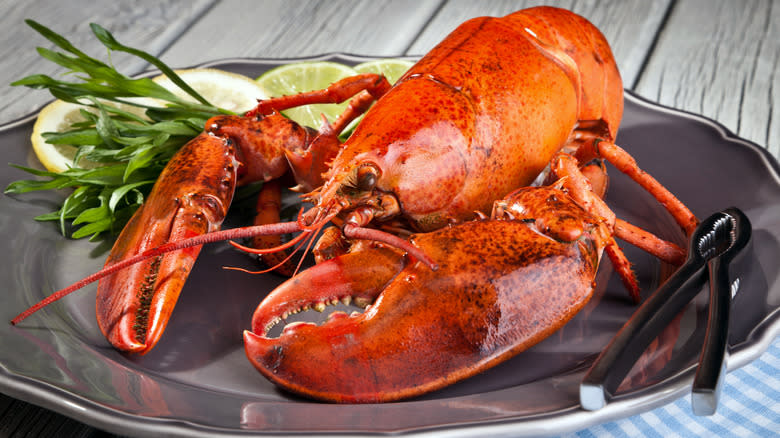Telltale Signs Your Lobster Is Undercooked

Lobsters are a delightful and mysterious delicacy, cooking them to perfection is an art. Eating undercooked lobster is not only a letdown in terms of taste but it can also pose health risks. Undercooked shellfish, including lobsters, can contain harmful bacteria and parasites that may lead to foodborne illnesses. Spotting an undercooked lobster involves observing several key signs, so let's dive in and "shell" out some tips.
The color of the lobster is your first clue. A fully cooked lobster will boast a bright red shell, but if you notice any parts that seem translucent or carry hints of blue or green that's a sure sign it's not done cooking. The meat inside should be opaque and white. If it appears translucent or has a jelly-like consistency, it's undercooked. The aroma of the lobster — it's not recommended to taste it if you suspect it's undercooked — can also be telling. A properly cooked lobster will have a sweet, ocean-fresh scent. An undercooked lobster may emit a stronger, fishy odor, indicating it hasn't been cooked thoroughly.
Checking the temperature offers a reliable way to ensure your lobster isn't still "chilling" in the undercooked zone. A food thermometer should read 145 degrees Fahrenheit when inserted into the thickest part of the lobster without touching the shell. If the temperature falls short of this mark the lobster needs more cooking time.
Read more: 15 Different Ways To Cook Fish
Cracking The Code On Cooking Lobster

How do you ensure your lobster will be thoroughly cooked? Various methods exist for preparing and cooking lobster, each imparting a distinct flavor and texture to the dish. However, no matter which method you choose, the principles remain the same: Ensure sufficient cooking time and proper heat distribution.
The size of the lobster significantly affects the cooking time; naturally, a larger lobster will require a longer period to be fully cooked. Achieving even cooking is crucial. If you're boiling your lobster, for example, make sure it's in a pot roomy enough for the lobster to submerge fully in the water, ensuring it will cook uniformly. For boiling or steaming, a general guideline is 10-15 minutes of cooking time for a 1-pound lobster, with an additional 3-5 minutes for every extra pound.
To verify that your lobster is cooked, besides relying on color, taste, texture, and temperature, some cooks suggest pulling on an antenna or a small leg to see if it detaches easily, indicating doneness. Still, the most foolproof method is to grab a thermometer and check the internal temperature.
Read the original article on Tasting Table.

